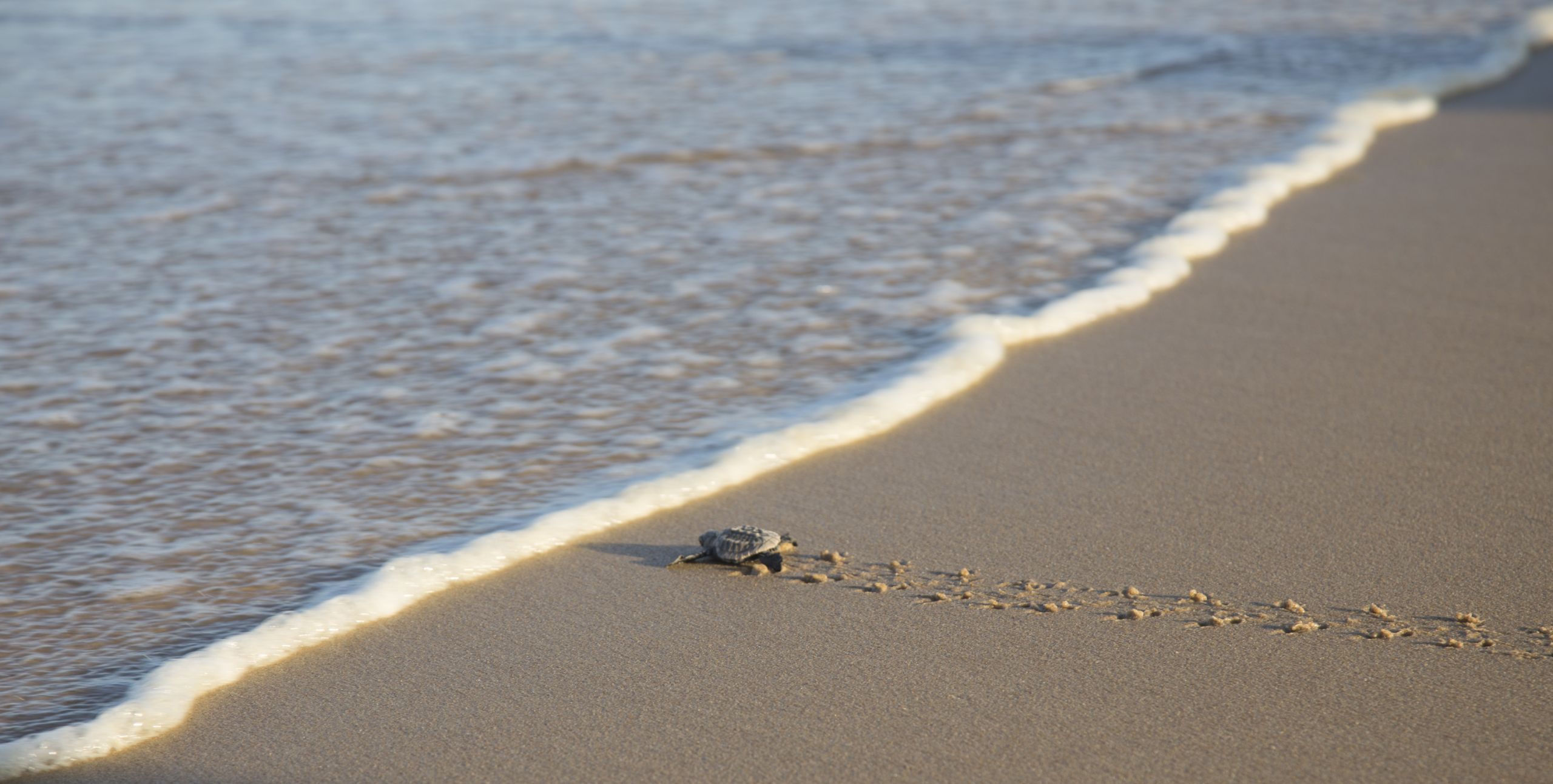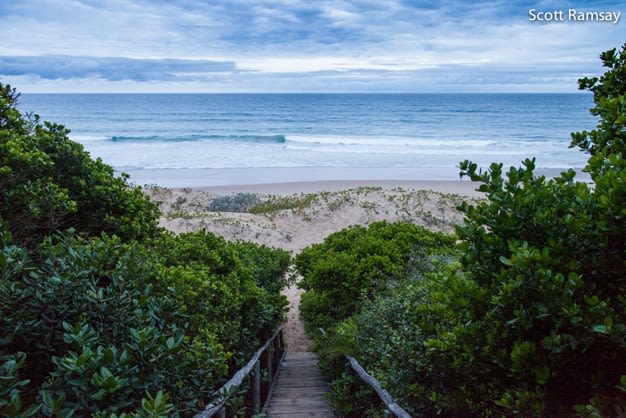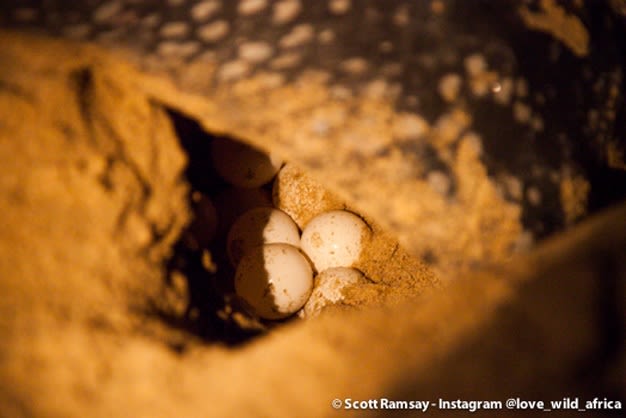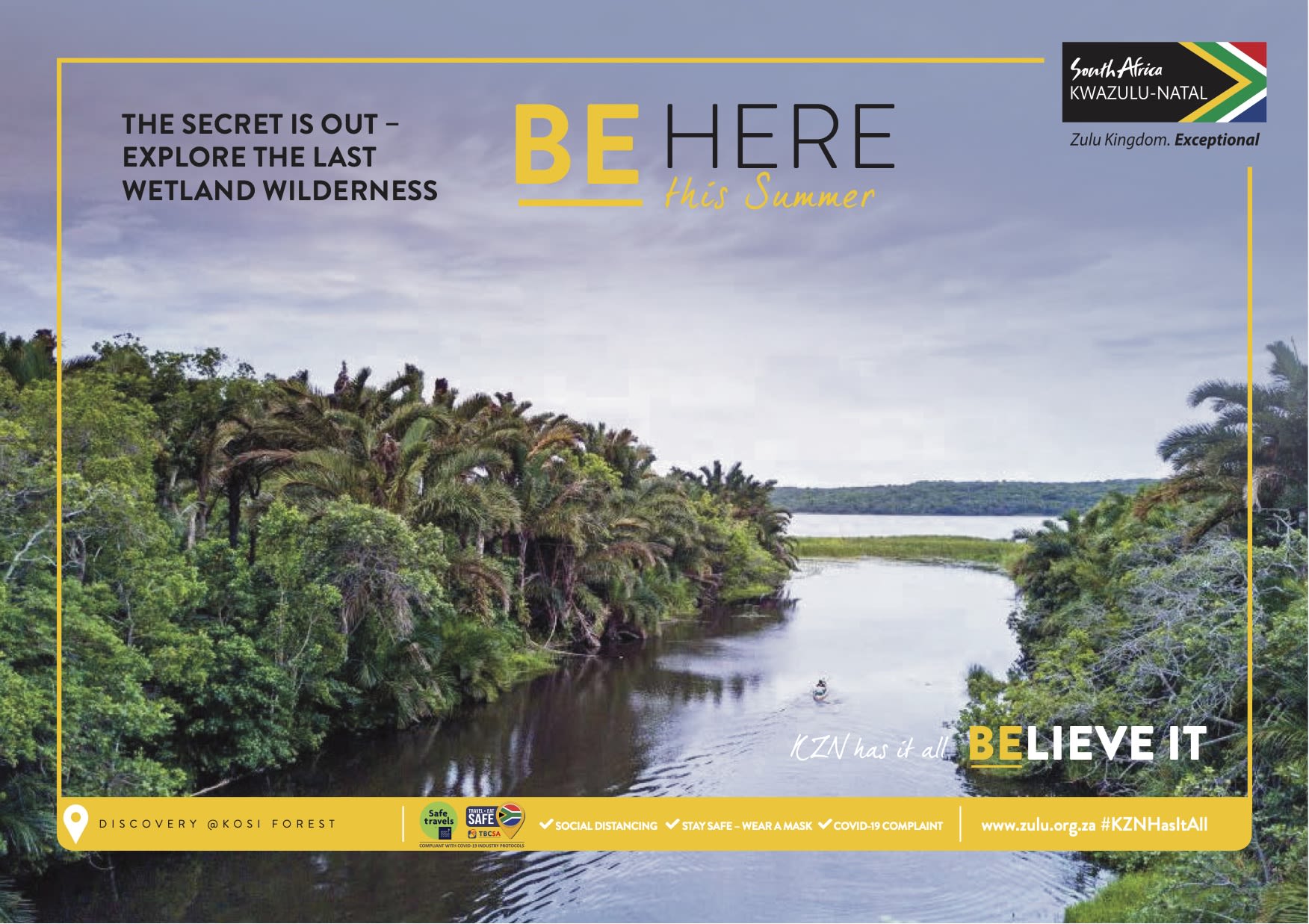The turtles of iSimangaliso

There is no better place in Southern Africa than iSimangaliso in north-eastern KwaZulu-Natal to witness one of the oldest rituals on the planet.
Every year, for the past 100 million years, female leatherback turtles have emerged from the ocean – mostly at night - to lay their eggs on beaches. In front of us was one of these remarkable creatures, laying her precious eggs. We were on the Indian Ocean shoreline near Sodwana Bay. A light mist had rolled in from the sea, and the full moon cast a haunting glow on proceedings.
During summer about 70 to 80 female leatherbacks return from their epic travels across the world’s oceans, to find their way back to these beaches.
As we knelt down beside the turtle, our guide Sabelo Mngomezulu estimated that she was probably about 400 kilograms, an average weight for a leatherback female. Her size dwarfed all of us. Sometimes they can reach almost a ton.

Sabelo told us how four turtle researchers, while trying to fit a telemetry unit to a leatherback, were once dragged helplessly along the beach when the turtle started walking back to the sea after nesting. Such is their immense strength.
As I knelt down next to her to take a photo, I noticed her broad back, over a metre wide. Unlike other turtle species, which have hard shells, leatherbacks have a streamlined, leather-like carapace.
Her tracks up the beach were about three metres wide. Her head - including that razor sharp beak that munches giant jellyfish in the deep ocean - was the size of a man’s head.Such a formidable creature may seem invincible.
But these supreme survivors that have dived the deep oceans for millions of years are on the verge of extinction. Leatherback turtles are now listed as a critically endangered species.
Not because they’re at the end of their natural evolutionary lifespan, but because we’re killing them. They swallow our plastic bags, thinking they’re jellyfish, then choke and drown.
They are highly sensitive to pollution, and are often hooked and drowned by long-line and net-trawling fishing vessels.
These days there are few untrammeled beaches where they can nest safely. On most beaches, their eggs and hatchlings are destroyed by vehicles, people, dogs and unchecked development.
After 100 million years they’re on their way out, and that would be a travesty of justice because they have every right to be here (they’ve been on Earth longer than any other large creature).
And because they are remarkable animals.

They swim relentlessly, almost non-stop all day, every day, using their hydrodynamic shape to cruise effortlessly through the open oceans. In just a few months they can cover several thousand kilometres. They can hold their breath for up to an hour, diving to more than 1 000 metres below the sea (where it’s pitch black), chasing giant jellyfish to gobble up. This is deeper than any other large creature, besides sperm and beaked whales.They are the fastest reptile, clocking up a swimming speed of 35 km/h. And they are unique in the reptilian world, because they can generate their own body heat. One turtle was found to have a core body temperature of 18 degrees Celsius above the ambient water.
And here’s a lady that won’t get lost without a map. Females will swim around the world and return to a beach near to where they themselves hatched decades previously. They are supreme navigators with remarkable memories.
Leatherbacks – and the smaller loggerhead turtle - seem to have real affection for iSimangaliso’s 220km of protected beaches in the northeast coast of South Africa.

Visitors to iSimangaliso can sign up for an accredited tour with a licensed guide. Access to the beaches at night is strictly controlled, and it’s one of the reasons why this protected area is considered a prime nesting site globally. The turtles and their nests are safe from humans.
It’s not only turtles that thrive here. It’s paradise for 3 000 other kinds of animals which are protected in this World Heritage Site. By some estimates, iSimangaliso has more species of animals than any other nature reserve in Africa. The diversity of habitats, ranging from bushveld to forest and from lakes to coral reefs, is unparalleled in Southern Africa.
Its seems inconceivable that this hotspot of biodiversity could have been lost just two decades ago, when mining companies wanted to dredge large parts of the shoreline and forested dunes for ilmenite, a mineral that is processed into titanium.
This black sand conducts heat, and although it’s valuable as an industrial and consumer product, it’s vital to the survival of the turtles.
“The ilmenite in the sands is critical,” turtle researcher Dr Ronel Nel told me. “The turtles have no sex chromosomes, so when they hatch in temperatures above 29° Celsius it’s a female and if the temperature is below that, it’s a male. Without the ilmenite’s warmth, most hatchlings would end up as males, effectively dooming the population to extinction.”

There was a public outcry against the mining proposals, and after years of campaigning by conservationists, communities and influential folks like Nelson Mandela, the iSimangaliso World Heritage site was proclaimed, banning mining forever.
This most likely saved this local turtle population from extinction, ensuring that they would be able to continue their timeless ritual.Have you experienced a tour with the turtles of iSimangaliso? We'd love you to share it with us - email info@traveller24.com
Contact these accredited guides at iSimangaliso for a turtle tour:
Ufudu Tours: +27-082-391-1503 or peterjacobs@lantic.net
Thompson Tours: +27-035-590-1584 or touring2@iafrica.com
Shoreline: +27-035-590-1555 or info@stlucia.co.za
Thembile Ngubane: +27-073-228-0934
Simangaliso Mageba: +27-072-725-2738
Shadrack Mathenjwa: +27-082-638-4488
Sthembiso Mthembu: +27-071-154-6623
Stay at Rocktail Bay Beach Lodge - www.wilderness-safaris.com or Thonga Beach Lodge - www.thongabeachlodge.co.za, which also conducts turtle tours.
Source: Traveller24


